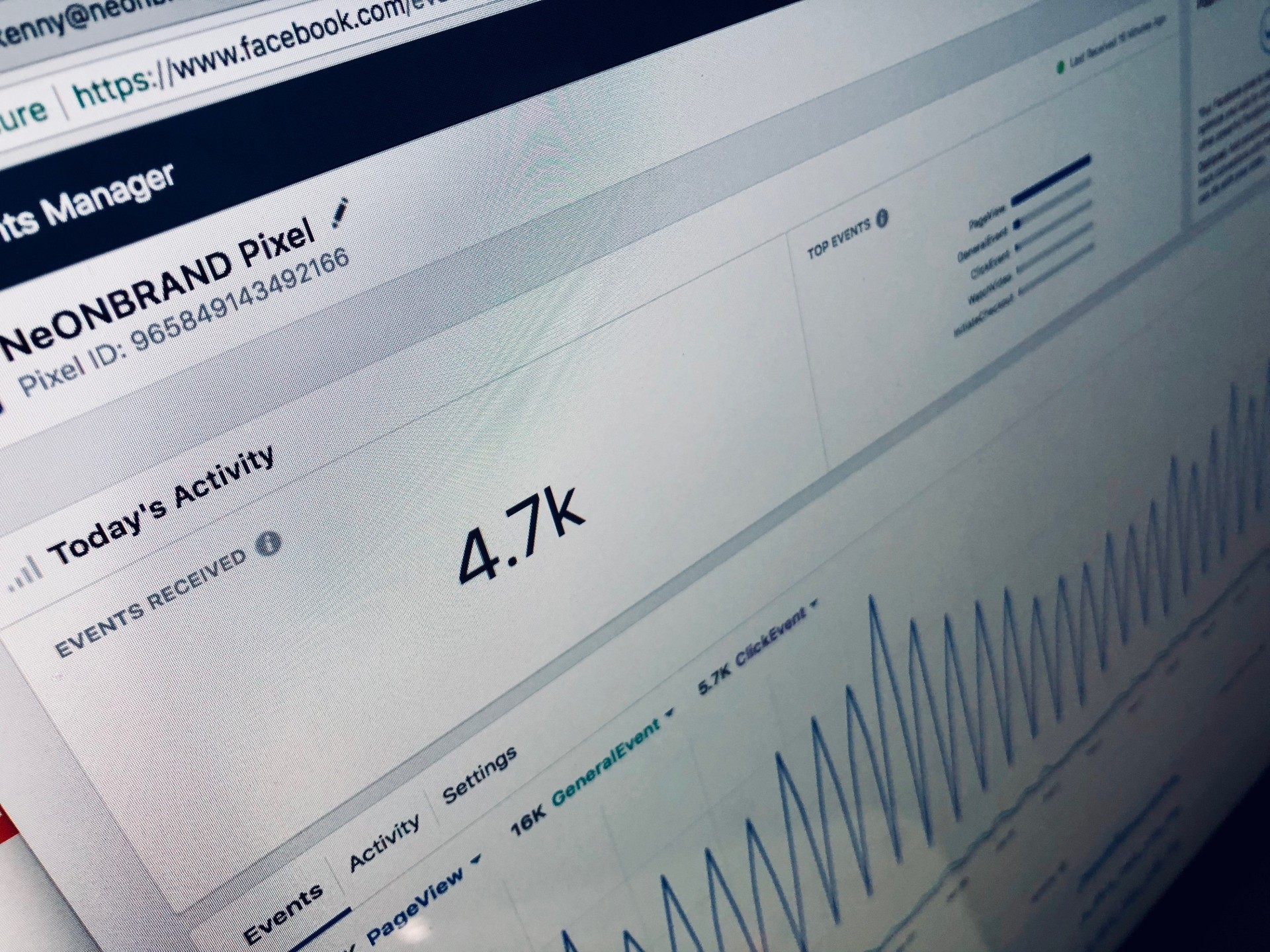
Digital Advertising is Changing. Here’s How to Make Sure it Works for You.
Cookies. No, not the biscuits. The digital type. Those small snippets of data that are downloaded to your computer when you land on a website.
Cookies are used for all sorts of things. Some of them help make the web browsing experience better, like remembering usernames and passwords or saving theme and accessibility preferences.
Other uses are focused more on benefitting website owners and digital businesses. Cookies are used to track online behaviour, generating user data that has immense value for digital marketing.
In particular, cookies have become integral to the digital advertising ecosystem. It is cookies that enable what is known as programmatic advertising – automated ad placements which use tracking and traffic data to target ads at people. It’s why you see online advertisements that eerily echo your recent browsing history.
Programmatic advertising is big business – global spend was forecast to top $150bn in 2021. Businesses trust it to deliver strong returns because it involves putting ads in front of people whose online behaviour suggests an interest in that product or service.
But the kind of cookie-based targeting that programmatic advertising relies on has become controversial. As the online privacy agenda has gathered momentum, the spotlight has been turned on the way personal data is collected and used for programmatic advertising.
The most significant outcome so far of this scrutiny on digital advertising practices has been the decision by major online platforms including Google and Apple to ban the type of cookies most programmatic advertising depends on. This marks perhaps the biggest single upheaval in digital marketing we’ve seen in the past two decades.
With Google set to switch off so-called third-party cookies on Chrome – the world’s biggest web browser – in 2023, marketing professionals are now scrambling to remodel online advertising in a more privacy-conscious way. Here’s what you need to know.

What’s the issue with digital ad data?
To understand what Google, Apple and others are doing and the impact it will have on advertising, we have to understand what third-party cookies are and how they are different to other types of cookies.
Third-party cookies do not belong to the domain of the website where they are found. They belong to external parties, such as digital ad networks, who have an interest in tracking online behaviour. So, in agreement with website owners (known in the trade as ‘publishers’, who stand to make money in commission for advertising space sold), digital advertising agencies place their cookie scripts on websites they don’t own.
When an ordinary web user lands on that site, the ad company’s cookie gets downloaded onto their computer. This allows the ad company to track their browsing behaviour and feed this data into programmatic ad platforms. When another business buys digital advertising space, an algorithm matches their product or service to the user data gathered from those cookies. The ads can then be targeted to people who are most likely to have an interest in that brand.
For the publisher, the ad agency and the advertiser, it’s a model that works fantastically well. It ends the traditional ‘scattergun’ approach to advertising, using data to place ads where they are most likely to lead to conversions. All parties in this chain benefit – more ad conversions lead to higher ad spend, which means higher commissions for publishers and so on.
All parties, that is, except one – the ordinary web users being targeted by ads. It’s not so much that people don’t like seeing ads linked to their browsing habits and interests. It’s the way that information is gathered that they object to.
The use of personal data – including information about what people do and view online – without express permission has become a hot topic of debate. It has led to regulatory interventions like the GDPR in the EU, which among other things now requires all websites to offer an opt-in for cookies.
But even then there is a widespread feeling that use of third-party cookies flies in the face of the privacy agenda. Web users giving permission for the site they are visiting to use cookies is one thing. But they know little about the external ad agencies who use tracking cookies for advertising, and even less about who their data is being shared with.
This is what has triggered the likes of Google to take action against third-party cookies. The web giant cites research which found that 81% of web users now feel that the potential privacy risks they face from data collection outweigh the benefits. Google clearly feels there is more commercial opportunity in siding with web users than allowing the digital advertising ecosystem to continue functioning in its present form.

What next for digital advertising?
To Google’s credit, as well as being responsible for perhaps hammering the final nail in the coffin of third-party cookies, it is also taking a leading role in imagining a more privacy-friendly future for programmatic advertising. Google is smart enough to realise that businesses won’t give up the benefits of data-led targeting easily. The aim now is to find ways to allow ad targeting that are better aligned with consumers’ privacy concerns.
The good news is that there is a widespread feeling that the changes being forced on programmatic advertising could make it even better than before. In a Google-commissioned survey of digital marketing professionals carried out by Forrester Consulting, 87% said that the forthcoming privacy changes would lead to improvements in programmatic advertising. 39% said they planned to increase their programmatic spend in the next 12 months.
The reason for this optimism is that the belief that ending the rather murky data collection practices exemplified by third-party cookies could allow the advertising industry to reset its relationship with consumers. Put bluntly, people no longer have a lot of trust in advertising. They believe advertising is motivated to sell at all costs with little regard for the customer. The privacy concerns around third-party cookies just feed into that narrative.
Marketers feel that a new approach to digital advertising based on consensus and less intrusive forms of targeting will help to rebuild trust, which in turn will result in higher conversions and even better ROI.
But what will a consensual, privacy-first approach to programmatic advertising look like? Here are three key strands:
A SWITCH TO FIRST-PERSON DATA
Digital businesses already use cookies extensively to collect browsing data directly from customers. This is called first-person data collection. The key thing is that first-person data collection is much more transparent. Particularly with the arrival of laws like the GDPR, businesses are obliged to ask permission before they collect personal data, and make it very clear how they intend to use it.
Of course, individual businesses can only control user consent around data on their own channels, which is not much good for advertising – there’s little value in running your own targeted advertising on your own website. So how can first-person data be made to work for general advertising across different sites?
One model being touted is the evolution of so-called private marketplaces for advertising. This involves the publisher (so the owner of a site where adverts appear) collecting permissions to use tracking cookies and share user data with external advertisers.
RENEWED EMPHASIS ON CONTEXTUAL DATA
Contextual data is less about the person and what they are doing while they browse and more about the circumstances surrounding their web activity. So things like time of day, where they are browsing from, the weather, the type of device they are using, language preferences etc.
Contextual data allows digital advertising to be targeted in a non-intrusive way. It provides cues for the kind of ads that perform best when a certain set of circumstances are fulfilled. It works best in combination with other forms of data – first-person data to segment audiences, historical performance data that highlights which types of ad perform best at different times (and who they are shown to).
LEAN ON MACHINE LEARNING AND AUTOMATION
Achieving the same level of precision targeting without simply tracking user behaviour in the background is more challenging. It involves stitching together insights about who to target, when from a greater range of data sources (e.g. first-person, contextual, historical). Machine learning will play an increasingly important role in managing this added complexity in programmatic advertising. But the positive is that it promises to raise the bar in how advertising is targeted going forward, especially as marketers explore other data streams to throw into the mix.
Similarly, better targeting can be achieved through more sophisticated use of campaign automation. Programmatic advertising has long used automation tools to select and display advertisements. But they tend to operate on pretty simple rules – if a customer has previously browsed topic X, display advert Y.
Better use of data mediated through advanced analytics and machine learning can provide additional insights such as how likely a person is to respond to a particular ad even if they have shown a previous interest. Or, to use the marketing speak, whereabouts on the sales funnel they are. Different creative can be prepared to target people at different stages, with different messaging and calls to action. More sophisticated automation can be involved in selecting not just when to show a campaign, but which content to display based on all the available data.
Data already plays a significant role in digital marketing and advertising. As we move into a new era of greater sensitivity about how personal data is used and protected online, what we’re likely to see is the importance of advanced analytics ramped up a notch or three. With the benefit of hindsight, third-party tracking now appears a somewhat crude approach, as successful as it has been. By being forced to look beyond third-party tracking, digital businesses have an opportunity to drive greater value from their digital marketing efforts, by using data in more sophisticated (and consensual) ways.



